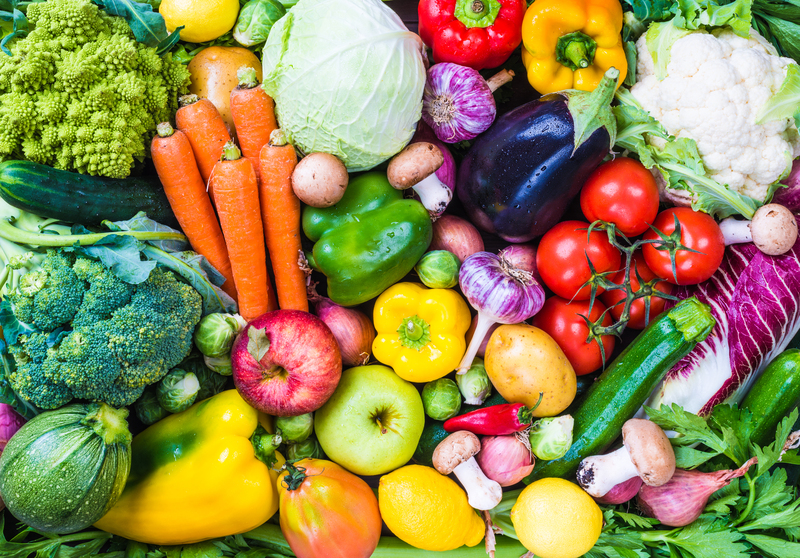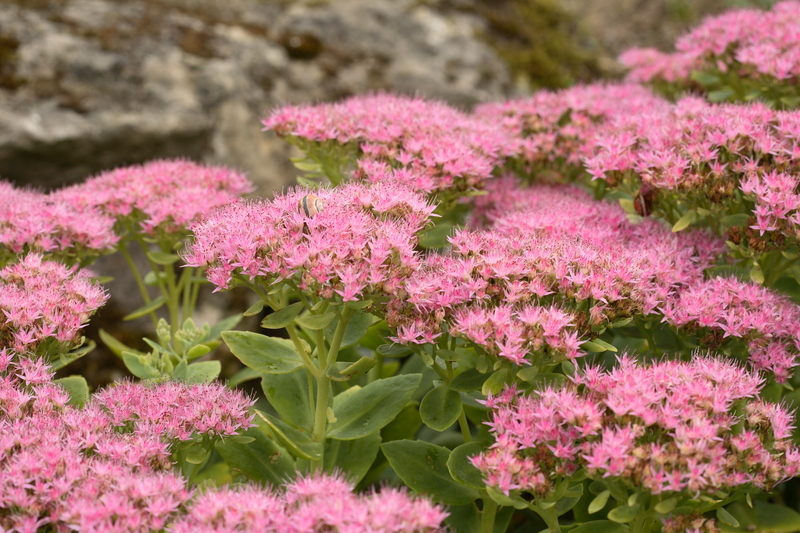Cultivating a Garden that Evokes Wonder in Young Minds
Posted on 06/06/2025
Cultivating a Garden that Evokes Wonder in Young Minds
Gardening can be transformative, especially for children. The simple act of getting hands dirty and witnessing the miracle of life sprouting from a tiny seed can spark curiosity, creativity, and a love for nature. If you're interested in cultivating a garden that inspires wonder in young minds, this comprehensive guide delves into creative, educational, and sustainable ways to design your own magical green space.
Why a Wonder-filled Garden Matters for Children
The benefits of gardening for kids go beyond the simple joy of seeing flowers bloom. For young people, gardens can be immersive places of discovery, exploration, and learning. A thoughtfully cultivated garden helps in:
- Enhancing cognitive development through hands-on science experiments
- Encouraging responsibility as they care for plants
- Sparking creativity as they design and personalize their space
- Supporting physical health with outdoor activity and fresh air
- Nuturing a lifelong respect for nature and environmental stewardship

Planning Your Magical Children's Garden
To create a garden that evokes wonder in young minds, careful planning is key. Consider involving your child in the process from the start--ask them what they'd like to grow, and listen for suggestions both adventurous and familiar. Here's how you can get started:
Choose an Accessible Location
- Make it visible and accessible to children of all ages and abilities.
- Raised beds or container gardens are great options for little hands and for those with mobility challenges.
- Pick a spot with adequate sunlight--most veggies, flowers, and herbs need at least 6 hours of sunlight per day.
Design for Engagement
- Paths and nooks: Windy paths, arched tunnels, and secret hideaways invite exploration.
- Colorful zones: Plant in color blocks or themes--rainbow beds, pollinator patches, or magical fairy corners.
- Sensory appeal: Integrate textures, smells, and sounds with diverse plant selections and features like wind chimes or water.
Selecting Plants that Captivate
When cultivating a wonder-filled garden for children, plant selection is crucial. Focus on:
- Edible plants: Strawberries, cherry tomatoes, snap peas, and herbs like mint or basil provide a tasty incentive for kids to engage with their garden regularly.
- Fast-growing flowers: Sunflowers, nasturtiums, marigolds, and zinnias offer quick gratification and vibrant colors.
- Unusual or fragrant varieties: Lamb's ear (soft leaves), chocolate mint (fun scent), or touch-me-not (Exploding seed pods) are all sure to ignite curiosity.
- Pollinator-attracting species: Lavender, bee balm, or butterfly bush will invite butterflies and bees, allowing children to witness wildlife up close.
Essential Garden Features for Young Explorers
- Miniature habitats: Install bug hotels, butterfly houses, or a pond to observe animal life cycles.
- Living tunnels and teepees: Grow climbing beans or gourds over canes to form shelters for play and shade.
- Fairy or dinosaur gardens: Let kids create fantasy worlds with miniature figures amidst the plants.
Involving Kids in Every Stage
The key to cultivating a garden that evokes wonder in young minds is active involvement. When children take ownership of their garden space, they are more likely to develop a strong and lasting connection to nature. Here's how you can nurture that investment:
Let Kids Get Messy
- Designate "digging zones" or mud kitchens where kids can play freely with soil, water, and safe garden tools.
- Provide age-appropriate equipment, and store them within reach to encourage independence.
Encourage Daily Garden Rituals
- Watering routines: Allow children to water their plants and observe how plants change daily.
- Garden journals: Help children record their observations, draw pictures, or write short stories inspired by the garden.
Make Learning Fun
- Science experiments: Germinate seeds in a clear container to observe root growth, or test different soils, sun exposures, and plant foods.
- Art projects: Paint plant markers, create nature collages, or build wind chimes with sticks and found objects.
Educational Activities for Garden Wonder
Beyond simply growing plants, garden-based learning unlocks creativity and curiosity in countless ways. Here are some ideas for activities that combine science, art, and play:
Wildlife Watch
- Challenge young naturalists to count bee or butterfly visits, or keep a chart of birds spotted in the garden.
- Provide binoculars and magnifying glasses to help them observe closely.
Smell, Taste, Listen, and Touch
- Set up a sensory scavenger hunt: Who can find the softest leaf, the strongest scent, or the crunchiest veggie?
- Encourage eating straight from the garden--raw snap peas, cherry tomatoes, or nasturtiums add instant excitement.
Garden Storytime and Imaginative Play
- Read books outdoors about plants, insects, and magical gardens to stimulate imagination.
- Dress up as garden fairies, animals, or explorers--it's a great way to merge storytelling and nature appreciation.
Sustainable Practices in Children's Gardens
Teaching sustainability in gardening fosters environmental ethics. Involving kids in earth-friendly practices makes the experience even more meaningful and sets the stage for lifelong stewardship.
Composting and Recycling
- Start a compost bin and let children add kitchen scraps. Use the finished compost in their own garden beds, closing the food cycle.
- Repurpose old containers as quirky planters--think boots, wagons, or buckets.
Water Conservation
- Use rain barrels to collect water for irrigation, and teach children why saving water matters.
- Mulch garden beds with straw or leaves to retain moisture.
Supporting Local Wildlife
- Plant native species to provide food and shelter for pollinators and birds.
- Create a "wild corner" by leaving a portion of the garden undisturbed for insects and small animals.
Tips for Cultivating Lifelong Wonder
The process of cultivating a garden that sparks a sense of wonder in children extends far beyond a single season or harvest. Here are key strategies for keeping curiosity alive:
- Let gardens evolve: each year, add new elements--try a pumpkin patch one year, a sunflower fort the next.
- Celebrate successes, but also appreciate failures--if a plant doesn't thrive, it's a chance to learn.
- Invite friends or neighbors to share seeds, ideas, or simply to enjoy the garden together.
Seasonal Activities in the Children's Garden
Make gardening a year-round adventure with seasonal activities that keep young minds engaged:
Spring: Planting and Discovery
- Sow seeds in egg cartons indoors, and transplant them together when warm weather arrives.
- Go on a bug hunt to look for signs of returning life--worms, bees, and butterflies.
Summer: Growth and Exploration
- Host an outdoor picnic in the garden or offer frozen garden treats (like mint popsicles).
- Organize a garden campout--with flashlights, stories, and nocturnal critter spotting.
Autumn: Harvest and Creativity
- Create nature crafts with fallen leaves, acorns, and pinecones.
- Harvest vegetables or flowers for an autumn feast or homemade bouquets.
Winter: Planning and Reflection
- Look through seed catalogs together and draw dream garden plans for spring.
- Explore winter wildlife tracks in the backyard or read nature stories next to a window view.

Resources for Families and Educators
Luckily, you don't have to set out alone on your quest to cultivate a garden that inspires wonder for children. Consider these invaluable resources:
- Local botanical gardens: Many offer tours, classes, and volunteer programs for kids.
- Community seed libraries: Find unique seeds and gardening advice tailored to your region.
- Online garden journals and apps: Track progress, share pictures, and connect with other young gardeners.
Books such as "Roots, Shoots, Buckets, and Boots" by Sharon Lovejoy or "The Garden Classroom" by Cathy James are packed with project ideas and inspiration tailored for families with young children.
Conclusion: Nurturing the Next Generation of Nature-lovers
In a world teeming with distractions, cultivating a garden that evokes wonder for young minds is a powerful investment. Not only does it equip children with essential life skills--from patience and observation to responsibility and creativity--but it also roots them in the rhythms and marvels of the natural world.
No plot is too small, no hands too young. With a little intentionality and playfulness, your garden can become a lifelong classroom where curiosity is sown, and wonder blossoms in every season.
Start today, and grow a future filled with joy, exploration, and a profound respect for our planet--one child, and one seed, at a time.

